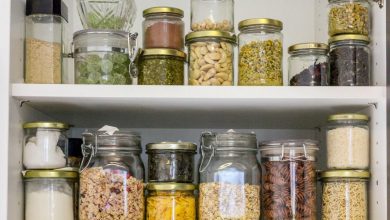
In recent years, there has been an increase in the need for gluten-free foods due to a rise in gluten sensitivities and celiac disease diagnoses. There has been increased popularity of the keto diet due to an increase in losing weight with this process. What are these two things? Can these two things be used together?
Gluten-free foods, according to celiac.com, are those that exclude gluten entirely. Gluten is what is found in foods like oats and bread; it is the substance that helps foods maintain their shape and acts as a glue that holds ingredients together. Medical News Today explains that the primary proteins contained in gluten are glutenin and gliadin. “Gliadin is responsible for most of the adverse health of gluten.” These items that contain gluten are also mainly full of carbohydrates.
The Keto diet is a diet that significantly decreases the number of carbohydrates one eats in a day. The purpose of this diet is to lessen the number of carbohydrates you eat so much that your body goes into ketosis. According to the same source, ketosis is when a person’s body begins burning fat for energy instead of the ingested carbohydrates. This process is meant to aid a person in losing weight more quickly and efficiently with a more easily sustained diet than many other popular ones. Once a person’s body enters ketosis, it more quickly begins burning the fat the body has stored up.
When a person severely limits their carbohydrates and sugar, which is the main source of energy for fat cells, the fat cells can seemingly melt away. To effectively reach ketogenesis, one must watch their protein intake as well. Healthline states that “protein can be converted into glucose if consumed in high amounts, which may slow your transition into ketosis.”
While these diets can often overlap, there are ways to have a “clean” keto diet and a “dirty” one. Both diets will help you achieve ketosis, but one will be more gluten-free than the other and will be more effective in assisting in weight loss.
What is a clean Keto diet?
According to Healthline, a clean Keto diet allows only about 50 grams of carbohydrates per day, successfully putting one’s body into a state of ketosis. This clean method restricts or eliminates processed foods and high carb foods like potatoes and many fruits. The main goal is to increase the intake of nutrient-rich foods, healthy fats, and healthy oils. Foods that fall into this category are those of “grass-fed beef, free-range eggs, wild-caught seafood, olive oil, and non-starchy vegetables.” This is considered the traditional keto diet, designed to send a person’s body into ketosis after about five days. This clean version diet can easily be achieved in a gluten-free way.
What is a dirty Keto diet?
On the other hand, a dirty Keto diet emphasizes ease and typically involves more processed foods. These processed foods tend to have fewer micronutrients the body needs and more additives and added sugars. While this diet can help you achieve ketosis, it has a lower rate of doing so because it does not emphasize eating clean. This version of the Keto diet is also higher in sodium. A person can implement the dirty version of this diet in a gluten-free manner. Still, it would be more challenging to achieve ketosis and ensure all the appropriate nutrients and micronutrients were consumed.
The food restrictions are about the same between the two versions of the keto diet; however, the dirty version does not emphasize watching one’s intake of calories, fat, or protein. This, in turn, lowers the longevity and quality of the diet’s benefits and may not end in overall wellness. The importance of diet quality cannot be ignored. Ignoring such will also make it more challenging to achieve ketosis.
Diet Doctor recommends that both sugary and starchy types of carbs be eliminated from the diet, including “foods like bread, pasta, rice, and potatoes.” These items also typically contain gluten, so it is easier to eliminate both the bad carbs and the gluten. However, one would also not consume foods specially made for those with gluten sensitivity, such as gluten-free bread.
There are various versions of the Keto diet, all of which assist a person in achieving ketosis. According to Healthline, the cyclical and targeted ketogenic diets allow the addition of carbs either on 2 days of the week or an increase included around workouts. Bodybuilders and athletes typically use these. The standard and high protein ketogenic diets focus on low carbs, higher protein, and healthy fats. These are the ones commonly used and researched by healthcare professionals and dieticians.
Much like how a person with celiac disease or gluten sensitivity can sustain a gluten-free diet by reducing gluten-filled items and replacing them with specialty-made foods, a person trying to eat in a ketogenic way can also maintain that particular diet. It takes knowledge, determination, and perseverance to achieve such a diet.
Suppose one believes that this diet is necessary for them to be healthy. In that case, the individual should consider talking with their primary care physician to confirm that a ketogenic and gluten-free diet is good for them. It can be beneficial in succeeding in weight loss, lowering blood pressure, and lowering triglyceride levels. However, those who are pregnant, breastfeeding, or take certain medications may be unable to implement such a diet or do some variation.
In conclusion, a keto-friendly diet may not always be gluten-free, but it can be easily adjusted to serve those who need it to be that way. One should consult with their primary care physician and decide what is right for them before beginning this or any other diet. Both the clean and dirty versions of this diet are beneficial and helpful in assisting an individual in achieving their dietary goals. However, eating clean is more likely to achieve ketosis.













